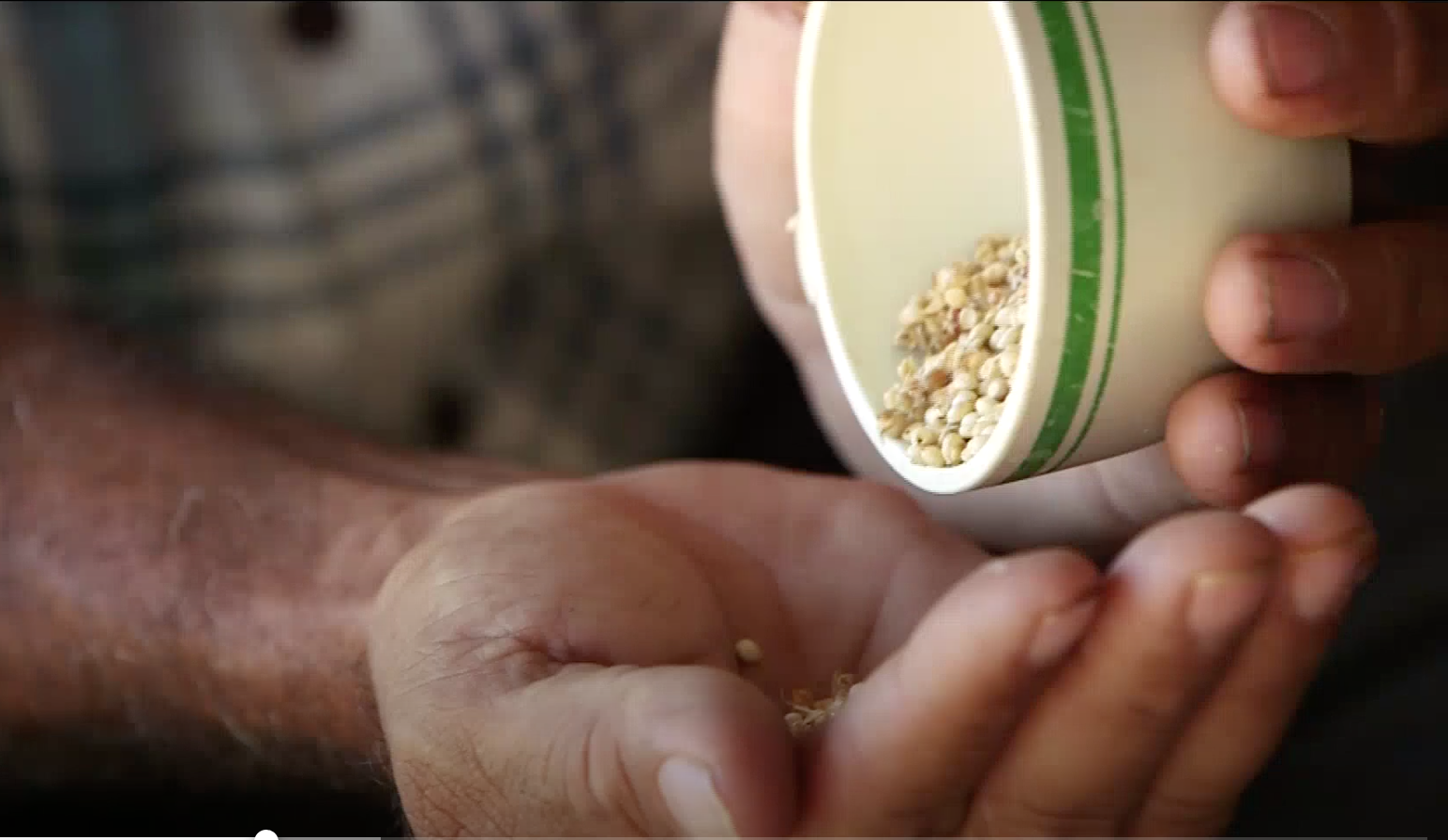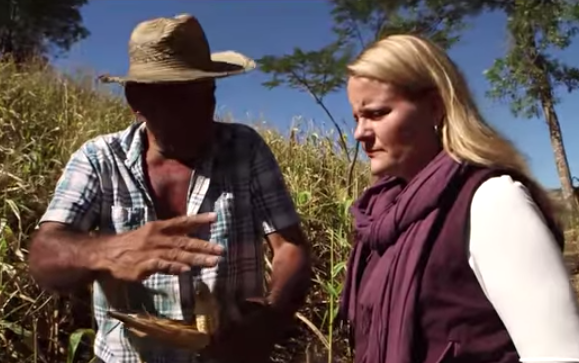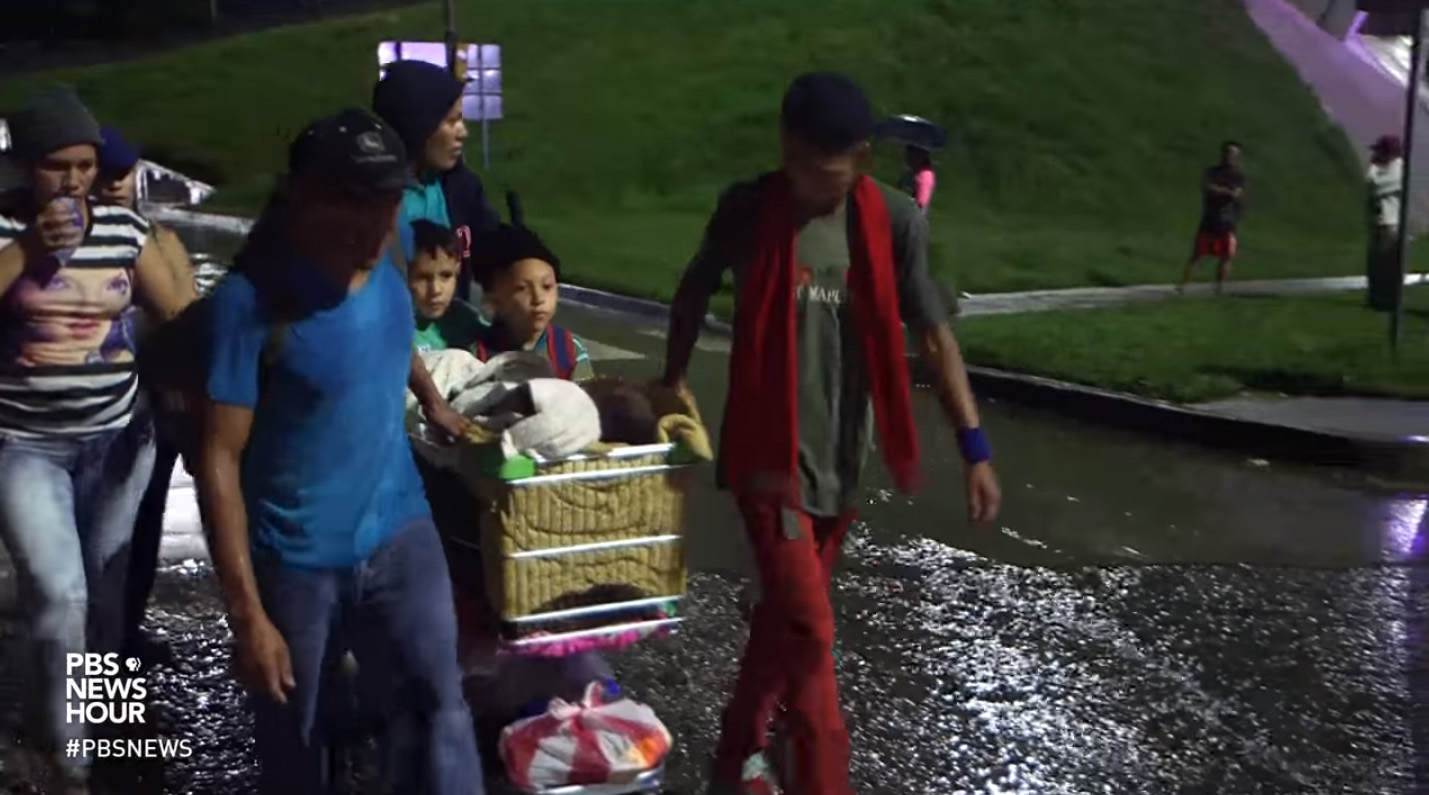
In rural Honduras, farming has been many residents' livelihood for generations. But now, rising temperatures and declining rainfall are killing crops and jeopardizing the farmers' very survival. Special correspondent Marcia Biggs and videographer Julia Galiano-Rios explore how climate change affects these rural populations, driving them into urban areas and ultimately, even out of the country.
Read the Full Transcript
Judy Woodruff:
We return to our series on migration from Central America.
We brought you stories of violence and insecurity driving people towards the U.S., but there are economic reasons, too. In Honduras, where agriculture sustains many people, long-term drought, caused in part by climate change, is forcing many to leave.
In tonight's report, produced in partnership with the Pulitzer Center, special correspondent Marcia Biggs and videographer Julia Galiano-Rios traveled to Lempira state in far Western Honduras.
Marcia Biggs:
It's a typical morning for Catalina Ayala, grinding corn to make the day's tortillas. It serves as daily bread here in rural Honduras, where families live off the land, growing corn, beans, and coffee.
Her husband, Alfredo, has been a corn farmer all his life. But this is the last of the family's harvest.
How much reserves of corn do you have?
Don Alfredo Monge (through translator):
We have enough corn for two months, 60 days.
Marcia Biggs:
Don Alfredo's one of almost four million people struggling to survive in what's called Central America's Dry Corridor, an area that stretches from Costa Rica to the Mexican border.
Historically known for its irregular rainfall, it earned the nickname in 2009, after a drought killed over half the crops in the region. Accelerated by climate change, rainfall in the Western Honduras state of Lempira has fallen sharply in the last five years.
It's just all dead.
Don Alfredo says, 10 years ago, he could harvest around 4,000 pounds of corn each season. Now he says he's lucky if he gets around 500. He says he's lost over 90 percent of his crop, and what was left wasn't even enough to live on.
OK, so he's saying that, when there is rain, when there is no crop — no drought, that the corn crop obviously is much bigger, much wider, the kernels are much bigger. And they had to forgo planting them because of the drought. You see what came because of the drought.
So they started planting these maicillos, which is what they used to feed the animals.
Don Alfredo's like most farmers we spoke to, who have started planting a lower-quality corn called maicillo, which is more resistant to drought. Traditionally used as chicken feed, it may keep them alive, but no one will buy it.
What is the maicillo like to eat?
Don Alfredo Monge (through translator):
Just bring it over. It's not the same. It's a different flavor. The tortilla is darker.
Marcia Biggs:
Is there any hope of recovering that land, recovering those crops?
Don Alfredo Monge (through translator):
There is nothing we can do about the drought.
Marcia Biggs:
While wealthier farmers can install irrigation systems, Don Alfredo says he doesn't have the cash. And without a crop, he will soon be out of a home. He used to pay the rent on his land with a percentage of his crops. And on good days, he's able to find work as a day laborer for around $4 per day. Today wasn't one of those days.
How bad is it for your family right now?
Don Alfredo Monge (through translator):
I am desperate. That is my personal situation, and that of many other families here. We are desperate. Not having food makes one desperate. Not eating for just one day causes distress.
Marcia Biggs:
Will you leave?
Don Alfredo Monge (through translator):
We will have to get out of here.
Marcia Biggs:
Where?
Don Alfredo Monge (through translator):
To find a place where we can have a better life.
Marcia Biggs:
According to the U.N.'s Food and Agriculture Organization, there's been a surge of migration from rural areas in Honduras, where farmers lost an estimated 82 percent of corn and bean crops last year from lack of rain.
And for coffee farmers, yet another problem, an epidemic of rust fungus, roya in Spanish, an insidious plant disease they liken to cancer, which grows quickly in dry, warm climates, destroying entire coffee plantations.
German Orellana is an agricultural engineer. He did his postgraduate research in the U.S., before returning to his tiny village in Honduras to work on water sustainability projects. He took us to see the effects of the roya, its signature, this yellow discoloration.
German Adan Orellana (through translator):
When the temperature is lower, 77 Fahrenheit or lower, this fungus will not spread. But when the temperature is really high, the climate hot and dry, it will breed on one leaf, to another leaf, and eventually to the entire plantation.
Marcia Biggs:
Honduras is the fifth largest coffee producer in the world, and Orellana says close to three million people depend directly on the industry. But he says 20 percent of the people in his village alone have left.
German Adan Orellana (through translator):
In the last four years, there have been plantations like this one left completely abandoned. Here, one can fertilize, eliminate, prune, clean, but the farmers haven't done any of that, because they know this can't be saved.
Marcia Biggs:
How catastrophic is this, the roya, for this region, which depends so much on coffee production?
German Adan Orellana (through translator):
Simply put, there are families that won't have anything to eat because there are entire communities that depend totally and completely on coffee.
The kids need to study. Families need to eat. If they can't sell this, the only option is to immigrate. If this continues, there will be more violence, more poverty, more hunger, more illegal immigration. It's not a problem in Honduras. It's a global problem.
Marcia Biggs:
Some farmers are sticking it out, trying to fight the problem. When the roya hit crops in 2012, farmers like Timoteo Cruz Alberto started planting a new type of coffee, called Lempira, thought to be resistant. It took three years for him to find out they were wrong.
Timoteo Cruz Alberto (through translator):
We had hope that they would be the solution for coffee farmers, but we have seen that's going to be difficult.
As you can see, they are all affected. So we will pick the beans from this plant, and then it will die. If the price of coffee was higher, we'd have the money to combat the problem. But, instead, the alternative will be that maybe we will have to join the caravan.
Marcia Biggs:
Are you thinking about leaving?
Timoteo Cruz Alberto (through translator):
Without this product, we don't have anything else to turn to. There's no other product. This product is wonderful, because it's the most socially conscious we have in our country. It employs so many people.
Here, you will see we have 20 people here cutting. Without this product, these people would have no other work.
Marcia Biggs:
For now, Alberto's crop still yields results. Coffee beans spill into buckets. Families working for him bring their children, on a winter break from school, to pitch in.
We asked them if they were worried about what roya could do to the future of coffee farming.
Man (through translator):
Roya means no work. No coffee, no work, no money.
Marcia Biggs:
If this farm dies, what are you going to do?
Man (through translator):
We have to go.
Marcia Biggs:
Where?
Man (through translator):
I don't know. Maybe the U.S. again.
Marcia Biggs:
For Don Alfredo, the decision to leave is more urgent. He and his wife are eating the last of their crop. And Catalina suffers from diabetes, which requires expensive medication.
He's tried to leave before. In 2001, Don Alfredo hired a coyote to smuggle him into Arizona, surviving for over a week in the desert with no food, before being caught and deported.
You are going to go through all of this again, without any guarantee that you will be able to stay?
Don Alfredo Monge (through translator):
I am 49 years old, and I already feel old, but the situation forces me to go.
Marcia Biggs:
Have you heard anything about the president, Donald Trump?
(LAUGHTER)
Don Alfredo Monge (through translator):
He is tough. That's what we hear here. He is tough. But what can you do?
Marcia Biggs:
Do you not worry about arriving and then just being sent back, being deported again?
Don Alfredo Monge (through translator):
Yes, I worry, but the hunger forces me to go.
Marcia Biggs:
The day closes again without rain, and those who have lived off this land for generations face yet another day without food, closer to the day when many will leave this way of life behind.
For the "PBS NewsHour," I'm Marcia Biggs in Lempira, Western Honduras.

Education Resource
Meet The Journalist: Marcia Biggs
In this four part series, Marcia Biggs visits some of the most dangerous neighborhoods in San Pedro...





